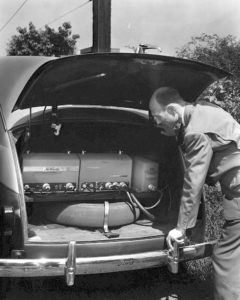Life of Roly and other weird stuff
Happy Friday the 13th. I was wandering around my yard in Erie, Colorado early this morning (garbage day!) and found several of these delightful little creatures. What do you call them?
As a kid, growing up in Wisconsin, we usually called them “Roly Polies”; which is the plural of “Roly Poly” I suppose. Sometimes we called them “Potato Bugs.” I don’t know way. We would tease and taunt them, so they’d curl themselves up into little balls; then we’d wait until they ventured to “come out” and then scare them into little balls again. Kids are mean. It’s a universal rule, … no?
Now I learn that many folks call them “Pill bugs.”
But they’re not “bugs” at all. At least they are not insects. Nor arachnids (i.e. spiders and the like).
Pill bugs are actually, amazingly (!), crustaceans, more closely related to crabs, lobsters and shrimp than beetles, worms or spiders.
Marty Robbins (who wrote and recorded “Out in the West Texas Town of El Paso” … one of my favorites) recorded a cute little song called “Roly Poly” in 1946, … seventy years ago. Although it sounds like it was about something other than our terrestrial crustacean pals.
Well, my wandering mind. That odd fact got me to thinking about some of the trees in the yard this fine morning. Got me to thinking about those that are green all year long and commonly all referred to as “Pine Trees”.
Well, they are all related (Coniferous), but they are not all “pine trees”; to be a pine tree it must have more than one needle attached to their branch at any one location where any needles appear. The most common around here, the Austrian Pine (no, not Australian) – more correctly called a Black Pine (pinus nigra)– has two needles per bundle. A little higher up in elevation we get a lot more of the rugged Ponderosa pine; those bundles can be either two or three, but most trees have more “threes” bundles than “twos.”
Trees with single needles are not pines; they are either spruces or firs. A flat two-sided needle indicates a fir. More frequently found around here are spruces. The single spruce needle has four sides. The easiest way to tell a fir from a spruce is to pluck a needle and try and roll it between your fingers; the four-sided spruce needle rolls easily; the flat fir needle, not so easily.
An exception is the lovely larch tree, which we don’t see much around here. These sweeties have 20 to 50(!) needles per bundle. So you’d think they are pines. But they are generally deciduous; the needles turn yellow and most of them fall off during the winter. So they aren’t even pines, claiming their own genus, Larix (or Larch).
Moving to one final Kingdom (crustateans = animal kingdom; conifers = plant kingdom; best I know there are 5 or 6, but I can’t name them) we come to what I call “The Magic Kingdom”; or the kingdom of fungi. Yes, the ugly, but often loveable, fungus.
I call it Magic Kingdom because of its mind-boggling diversity and for what its members do: which is a lot of the very cool (and dirty) work in this world.
Among these tasks is a very special assignment for yeast. At least I think it’s important. Yeast can transform carbohydrates and water into carbon dioxide – and ethanol. It works this magic on everything from grape juice, apple juice to a brewed concoction of malted barley – turning them into wine, hard cider and beer. Let us give thanks for the Magic Kingdom!
Finally, returning to 70 years ago (in fact 70 years ago today!) I’ll share this very short guest essay from John Sarkis, whose work I’ve shared before. [John is a retired St Louis native, who regularly posts interesting St Louis-area history blurbs on the FaceBook page “St Louis Missouri, History, Landmarks and Vintage photos.” He’s given me permission to re-post his material].
__________________________________________________________
May 13, 1946 – 70 years ago today, Southwestern Bell announced that the Federal Communication Commission (FCC) had granted them a license for radio-telephone service, which would enable those in St Louis to be the first in the nation to make and receive phone calls in their car.
Covering a 75-mile radius of downtown, calls to an auto had to be placed through a mobile operator at 2654 Locust. This was transferred over normal telephone lines to the office at 1010 Pine, where the call went out over VHF radio from the 250-Watt transmitter on the building’s roof.
Service cost $15 a month, after a $25 installation fee. There was an additional charge per call, depending on time and distance.
As seen in this photo, necessary equipment took much of the trunk space.
(Thanks John!)
[Editor Joe: I think the range was very optimistic. Still, even at 10-20 miles, Not bad]
See you all in June. Ciao
Peace,
Joe Girard © 2016

